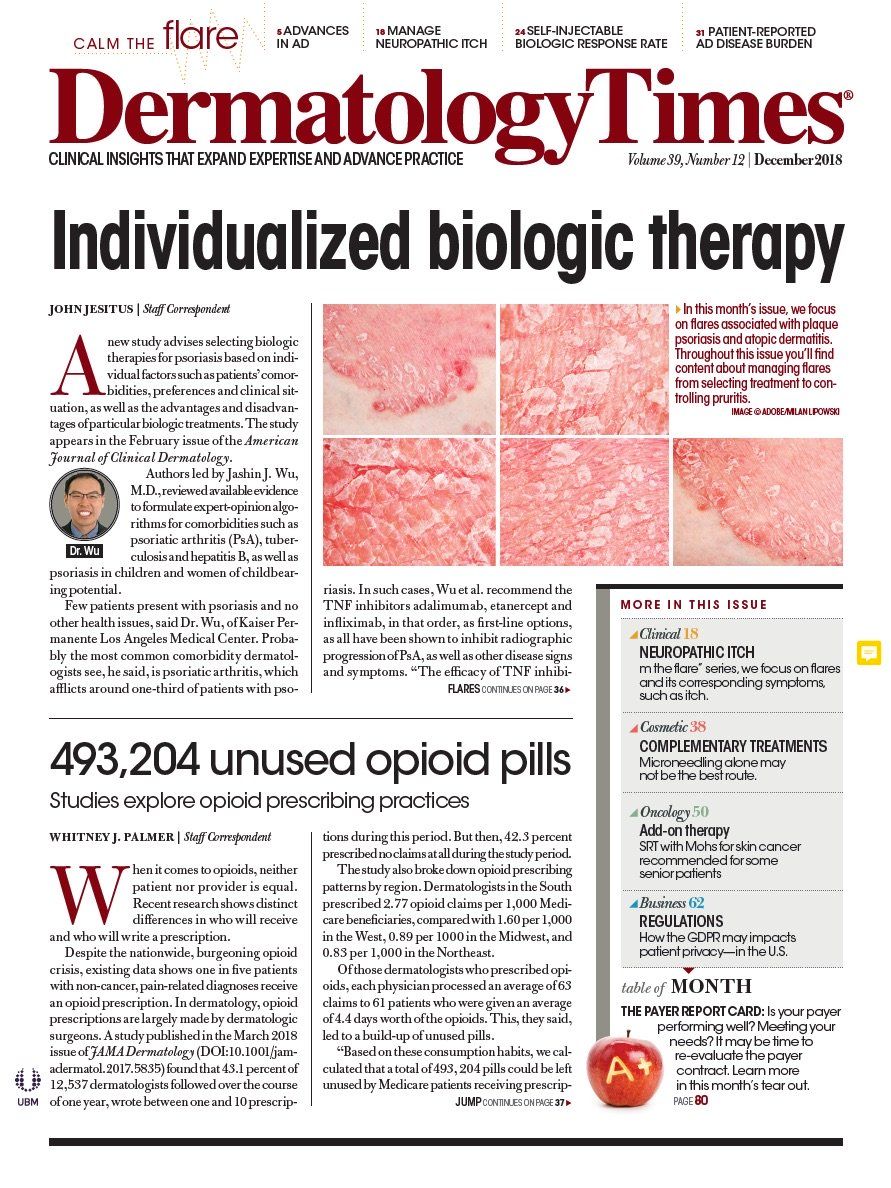- Acne
- Actinic Keratosis
- Aesthetics
- Alopecia
- Atopic Dermatitis
- Buy-and-Bill
- COVID-19
- Case-Based Roundtable
- Chronic Hand Eczema
- Drug Watch
- Eczema
- General Dermatology
- Hidradenitis Suppurativa
- Melasma
- NP and PA
- Pediatric Dermatology
- Pigmentary Disorders
- Practice Management
- Precision Medicine and Biologics
- Prurigo Nodularis
- Psoriasis
- Psoriatic Arthritis
- Rare Disease
- Rosacea
- Skin Cancer
- Vitiligo
- Wound Care
Publication
Article
Dermatology Times
As an add-on to Mohs surgery, this treatment may have its benefits
Author(s):
Superficial radiation therapy (SRT) targets only skin cancer cells and has few side effects, researchers reported at the American Society for Dermatologic Surgery annual meeting.
Superficial radiation therapy (SRT) targets only skin cancer cells and has few side effects, researchers reported at the American Society for Dematologic Surgery annual meeting. (©AdobeStock_143296724)

A treatment targeting only skin cancer cells can be a strong addition to Mohs surgery, according to newly-released data.
Superficial radiation therapy (SRT) is a non-invasive procedure used to treat non-melanoma skin cancer. The photo radiotherapy used penetrates only 5mm below the skin’s surface. It attacks skin cancer cells before dissipating, ignoring healthy cells.
This treatment, presented at the 2018 American Society for Dermatologic Surgery annual meeting, is unique, said Joe Sardano, chief executive officer of Sensus Healthcare, the company that produces SRT, largely because of its benefits. SRT requires no anesthesia or cutting, and it causes no pain, no bleeding, and no scarring. Consequently, it could be a good option for skin cancer patients over age 65 who are diabetic or who take beta blockers. Diabetic patients are more susceptible to post-surgical infections, and beta blocker patients bleed more easily, delaying healing.
“Due to the loss of elasticity, older patients require more stitches,” he said. “Eighty percent of skin cancers occur on the neck and face, making healing and scarring from surgery an experience many would like to avoid.”
Each treatment lasts roughly 40 seconds, and most patients receive 2-to-3 weekly treatments for 3-to-4 weeks.
To test SRT’s safety and efficacy for treating basal cell (BCC) and squamous cell (SCC) carcinomas, investigators reviewed the medical records of 105 patients with 151 biopsy-proven cancers in a retrospective study. The average patient age was 82.5 years, and the average BCC and SCC lesions measured 1.08cm and 1.27cm, respectively. Patient co-morbidities included use of anticoagulants, thyroid disease, poor circulation, diabetes, stasis dermatitis, and immunosuppression.
Lower limb lesions received an average dose of 5,019.34 cGY and an average time-dose fractionation of 101.91. Most patients had 50kv, but three had 70kv. The majority (89 percent) received 3 fractions weekly. Thirty-two percent had a follow-up period of more than 4 years; 30 percent for 3 years; 20 percent for 2 years; and 17 percent for less than 2 years. The overall success rate was 97.35 percent - all but four lesions were cleared.
Ultimately, Sardano said, results demonstrate SRT is a viable option to add to the therapy arsenal for this older patient group.
“We haven’t introduced this product as one to replace Mohs surgery. It’s a very good complement to a Mohs surgeon’s practice,” Sardano said. “If you’re looking to provide patients with a total solution set of options, then having this device available for older patients who are on beta blockers or who are diabetic makes a lot of sense.”


























